Why Chinese players are the best ones?
20 Ottobre 2008 da Ping Pong Italia
By Massimo Costantini
Beyond political matters, that are influenced by economic matters, that are in its turn influenced by matters of sponsoring, and so on.. I just want to analyse what is the most important to me, that is the technical matter.
We always spoke about Chinese supremacy in general terms, sometimes trying to give importance and sense to concepts like better training, better organization, better technique, better legs, and so on, sometimes trying to give sociological explanations to this phenomenon: natural selection, school, political system. But after all, I never heard or read why Chinese players are the best ones. It’s always the same, trivial question, that outsiders make: why Chinese players are the best ones? We discuss like we were in front of a sort of postulate, a fact, almost a resignation. I felt this feeling also talking with the most appreciated coaches of the world: the European players enter in the field with some points behind before the beginning of the match.
That’s why now I’ll try to give a technical explanation, hoping that in this way I can feed a discussion that can just reveal itself to be helpful to our movement.
First of all, I’m convinced that we never think enough over how to improve the technique of the strokes and the development of the play. It could seem exagerate, but it is so. That’s why many times the training is oriented to improve the ability to make as less mistakes as possible, forgetting that, also in routine trainings, the true quality to research is the technique and its deep analysis.
Before studying in depth this matter, we must give a brief introduction to better deal with this subject.
Ping-pong is a technical sport, absolutely and extremely technical.
The technical base and its evolution must be taken into a very serious consideration for all the lehgth of a player’s career, from the very first moments of the play until the most professional ones.
When we get into a mistake, whatever it may be, the reasons could be two: wrong evaluation of the ball (objective) or technical mistake (subjective). The choices we make in a match, or in the training too, come always from a visual stimulus, and that’s why the result of our choices depends exactly on what we really see and perceive. We must be very honest to affirm that in the most cases we didn’t see the ball, so we made a wrong evaluation with a negative consequence, that is the loss of the point.
The play, the training, the empirical experience and the daily routine allow us to automatically improve the perception (objectivity) and so the evaluation of the opponent’s ball, making us perform, from time to time, the most convenient choices.
Our active presence and our critical sense will allow us to consider the technical mistakes, to work on them with courage and decision, and, from time to time, to enrich our technical experience.
It was very important to underline those aspects, because, as we will se later, they will be the daily bread of our improvement.
Europe is paying high for two mistakes: one severe and one light: the severe one concerns the laziness at work, that accumulated from the half 80’s. The importation of many foreign players weakened the continental history instead of enriching the technical rate, as the Europeans thought. It should be interesting to know the number of the Chinese players, or more generally, of the Asiatic players that flowed into Europe: an enormous quantity. Instead of enriching themselves from the technical point of view, allowing the local choaches to grow for a new training education and study of the technique, they prefered to bet on the improvement of many clubs and afterwards on the improvement of national teams, shearing in fact the cycle of the technical progress of the players at its roots. Today we are living the drama of the illusion, that is following us from more than 20 years.
The second mistake, the light one, is the backhand stroke.
With this concept on a technical base I’ll start my analysis.
I had the idea to write on this post looking at the Drago Rosso’s pictures and, of course, reading his article.
It’s unquestionable that in the last 20 years the play became not just more fast, but also more powerful, thanks to glues and thanks to more and more perfect training methodologies, too. And that’s why the gap between Asia and Europe become even more clear, because, whereas the Chinese players, traditionally penholders that always played without backhand, developed the legs movement technique at the serve and an effective forehand play, the European players, on the contrary, continued to pursue the balance between forehand and backhand, thinking that a more centred position at the table should be more winning in comparison with the Asiatic one, definitely more shifted to the backhand angle of the table.
Of course, also in Europe we can talk about tradition, but just those who went against the mainstream, encouraging different situations of the play, were rewarded: in 1979 the Hungarian players promoted a short play and powerful backhand and forehand strokes with an almost extended arm. During the following years, the Swedish players developed a psychologically perfect management of the game together with really unique individual features (Waldner, Appelgren, Lindh, Persson). And more: Gatien and his excessively forehand play. As last example, between the European players that resisted to the Asiatic power, we can mention J.M. Saive: at 40 years he still continues with his preponderant forehand play.
What kind of damage does the backhand produce? The maintenance of the position of the arm almost always more bent than it’s correct. The waiting position, exactly for its features of balance between forehand and backhand play, creates reactivity problems.
The consequence of a too much bent arm leads to the execution of the forehand in a too blocked way: this doesn’t let the shoulder, that is the real propeller in ping-pong, do his work of push. Besides, a bent arm impoverish the peripheral quickness, contracting the stroke and reducing it to something more than a topspin opening of the game.
Try to think about a discus thrower that makes his throw with the arm bent: the power of the throw will certainly reduce at least 50%.
I ask you to examine the moments of the impact with the ball in Chinese players, but also in Korean players. I don’t mention the Chinese players from Hong Kong and Singapore, because they all have the same origin. These players are characterized by a common technical feature, that is the absence of the backhand in all its ping-pong history. I shall leave out the Japanese players, that in the last years Europeanized maybe too much, in virtue of the work performed by Mario Amizic.
Turning now your attention to the pictures, that from my point of view are more educational than videos, it is important to underline how the position of the legs, of the trunk and of the shoulder, in the Chinese play, are basic components to release as more power as possible. There are some examples in which the ball seems to go even beyond the axis of the body: in fact, it’s a way to prepare the body for a pure power action, using the whip effect of the body.
On the contrary, the common technical feature of the European players is a position of the arm too bent to allow the use of the maximum power, and that’s why this action could not be performed if we are thinking about the possibility of playing a backhand stroke. As well, exactly because of the bent position, the shoulder operates as a lifting factor of the arm, and not as a push factor.
There is one more thing to say about the Chinese players’ backhand. We must not forget that in the moment when they play a block stroke, their arm spreads almost completely, preparing automatically the forehand stroke after making a step-around. The Europeans’ block is hardly ever played with a spread, the movement stops in advance and the opening of the arm for the forehand play will be more bent. Take a look at Samsonov’s positions an you will realize that his strokes rarely are played with power, but on the contrary, they are played with accuracy.
So, the tradition of the forehand play brought and is bringing an enormous advantage in all those situations in which power results dicisive for the success, that is in the last 20 years of play. Coming back to the main motivation, we can affirm that for the European players the backhand stroke has been a limit of the play instead of being a resource, just talking about the time they must dedicate to every single exercise in a training session: but passing over this point, as we have seen before, it is just a technical matter.
Although the olympic champion and the finalist are penholders, but with the possibility of hitting the ball with both faces of the bat, we can think that their play is more balanced, more european. We can consider even more players like Wang Liqin or Chen Qi, or even Ma Long: well, in all cases the Chinese play has a low backhand strokes percentage in comparison with the forehand ones. As well, if we make a calculation of every single point won, we’ll see that on 11 point won, the 60% at least results from a forehand stroke, the 15% from a backhand stroke and the 25% from the opponents’ errors.
Europe stayed behind, because it was not able, or it didn’t want, to sense that that was the easier and simple way to gain the point, that is hitting the ball with a forehand stroke. A forehand play requires of course a huge physical effort. In this case I’d want to include even Italy. Neither we had the right spirit to follow the Chinese ideas. Maybe in the 80’s they seemed too exagerate for our playing system.
Actually, today Europe has no chances against Asia. We have short, limited movements, with a very small participation of the shoulder and of the trunk; they have large movements with a total support of the shoulder and with the push of the body. We work with short steps and when we jump on the ball our body is too faded to transfer energy and power. They work on large movings and when they jump on the ball their body helps them to hit with more power and decision.
In the Chinese system, and also in other ones, huge loads of the physical work at the table had 2 different ameliorative targets: specialization and willpower.
Let’s explane this concept. Specialization means to operate a system of training in which the first target is to end the play with a forehand stroke, and it doesn’t matter in what kind of situation we find ourselves, neither in which game context, the backhand stroke is considered an exception of the play and a bother for the opponent. To reach this target we must have excellent legs, not just talking about power, muscle tone, reactiveness or explosiveness, but most af all as a precise action of what we want to do, that is the correct steps.
A simple example.
A European player is recovering a ball on his forehand. After hitting, the ball comes back on his backhand ¾ side of the table: the player will certainly decide for a return to the table with the backhand, working the ball and returning it with spin, or maybe he will decide to risk a power stroke (unlikely). A Chinese player, in the same situation, will seek for another forehand stroke and, if possible, he will play it with even more power. To do this, as we said before, we need excellent legs and correct steps: but this is not enough. Besides the legs and their technique we need an additional psychological strength, that only a specific training can give us. In the final part of this post I’ll come back to the psychological factor.
We said that the european backhand stroke brings as a consequence a preparation of the forehand stroke with a more bent arm position: how can we come out from this handicap? From my personal point of view we have 2 possibilities: the first one is try to unbalance the body, streching out to the backhand angle and increase the ability to cover more than ¾ of the table with the forehand. The second way is more tachnical (the way I prefer): we must try to extend the backhand stroke as it was a preparation of the forehand stroke, keeping in mind that when we extend the stroke we also suffer a loss of time, so that’s why we must also improve the quickness in executing the stroke.
To econimize the strokes and to make use of a better quickness, we might use the backhand stroke in an active way, almost as a contrast. Not with a soft arm ready to spring, but an arm that has such a muscular tension to be itself an opposing power. In this way we find ourselves with an almost extended arm, with the shoulder-elbow-wrist block as they were one single piece. In the moment that we are with a half-extended arm we’ll just need to make a quick twisting of the trunk and then get ready to play a forehand stroke. I want to explain a question: when I talk about a forehand stroke that exploits the peripheral power, I don’t mean a completely extended arm position, the “extended arm” that went in fashion, not just in Italy, in the first 70’s, but I talk about a position in which the push of the body and of the shoulder are a sort of pre-stroke, that anticipate the action, loading further the arm.
To hit the ball with more power we need an arm that moves after that the body and the shoulder moved against the ball. In all the cases in which the arm executes a stroke without the aid of the body, we’ll find ourselves in front of a braked stroke. To make this concept more clear, here you can see a small photogallery of Asiatic players.
photos by Drago Rosso
Afterwards I suggest you another photogallery of European players: between all of them you will certainly notice Kreanga: his forehand strokes are similar to the Chinese players’ ones, but they are empty of the power of the body and of the legs.
The legs work involves the most wearing part of the training and also involves the psychological one. This is a purely Asiatic prerogative, because with this typology of training we must also include the Japanese, the real masters. The training of the legs influences the psychological condition, because it requires the body to “look for” the ball. Legs are the decisive factors of the strokes we want to play. Become protagonists of a match means develop an enormous potential of the legs work. Things happen because we want them to happen, so we talk about active, and not about passive, protagonists of the game. Afer making legs trainings with heavy loads we’ll have the feeling that we dominate the space around us with maximum confidence.
I’ll end this post saying that Europe must make a serious self-criticism. Europe must learn from the defeats it suffered and recover the management of the technique. How? Utilizing a good opportunity for a comparison, that are not the matches between European and Asiatic players, but being spectators at the Chinese National Championships, being curious, being acute observers and, most of all, being never pleased with what we think to already know.
translation by Denisa Zancaner
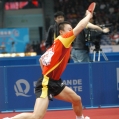
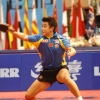
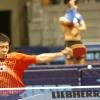
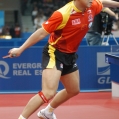
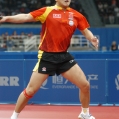
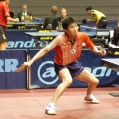
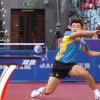
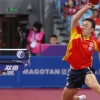
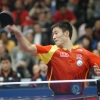
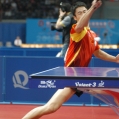
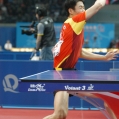
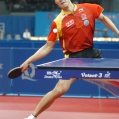
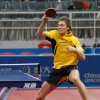
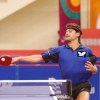
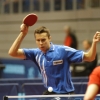
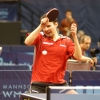
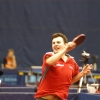
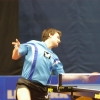
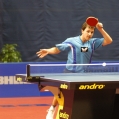
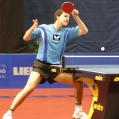
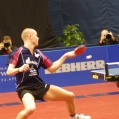
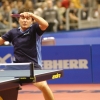
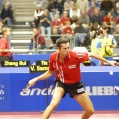
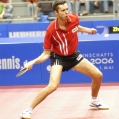

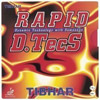
[...] The latest USATT magazine has apparently reprinted this insightful article from the Italian ex-world ranked player and now coach Massimo Costantini, giving his point of view on why the Chinese players are the best. [...]
No matches on american medias about Arturino, also called Lelesguizzero?